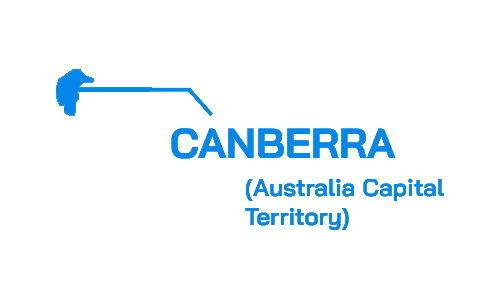
Geographical location:
- Area: 814.2 km2
- Canberra borders the Brindabella Range and is located about 150km off the east coast of Australia. This city is about 240km southwest of Sydney.
Population and language:
- Population, 2020: 431,215 people
- Most of the population in Canberra speaks English, in addition to other languages such as Spanish, Italian, and Vietnamese.
Climate:
- Because the Australian capital territory is located deep in the continent and is landlocked, the climate of Canberra has 4 distinct seasons.
- Spring: falls at the end of the year from September to November with airy, green air.
- Summer: warm climate, usually lasts from December to February next year.
- Autumn: appears in March, April, and May, the weather at this time begins to change seasons, and tends to be cold with thick fog and often frost.
- Winter: appears in the last 3 months from June to August, the weather turns completely cold, the temperature drops to minus zero (July), there is often fog in the morning, and sometimes snow falls in high mountainous areas.
Education:
- Canberra is known as the “education capital” of Australia. Nearly half of the population here has a Bachelor’s degree. Many work in professional services and knowledge-intensive industries.
- In 2019, Canberra was ranked 23rd among the world’s best cities for students. Because, Canberra has many schools that provide quality, modern learning facilities and many excellent academies and vocational schools.
- Education institutions in Canberra offer hundreds of curricula and thousands of different courses to students, including from leading public and private schools in Australia. Besides, Canberra owns modern education infrastructure and the largest free public wifi system in Australia, ensuring you a great learning environment.
- Universities in Canberra can include: Australian National University, University of Canberra, UNSW Canberra.
Economy:
- As the capital city of Canberra is home to many government headquarters, nearly 50% of all jobs here belong to the Government. Besides, the Government also has a great contribution to the total GDP of the capital through purchases and activities funded by the Government.
- Therefore, Canberra’s economy is almost entirely dependent on the Australian Government. However, into the 21st century, the capital has attracted more private businesses thanks to a number of solutions. The unemployment rate in the capital Canberra (2.9%) is lower than the national average (5.1%).
- The most developed sector of the capital is public administration, accounting for nearly 30% of GDP. In addition, some other fields are also quite developed such as healthcare, education, retail, construction, etc.
- In particular, Canberra is home to many important government agencies, the cybersecurity and defense industries are thriving.








